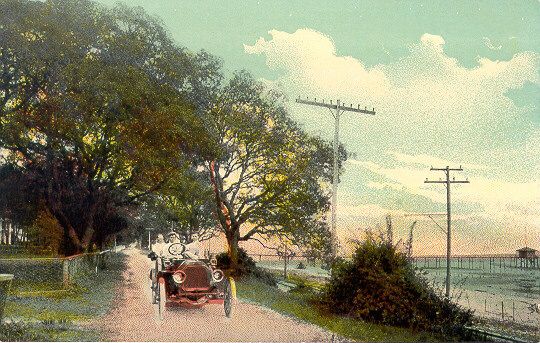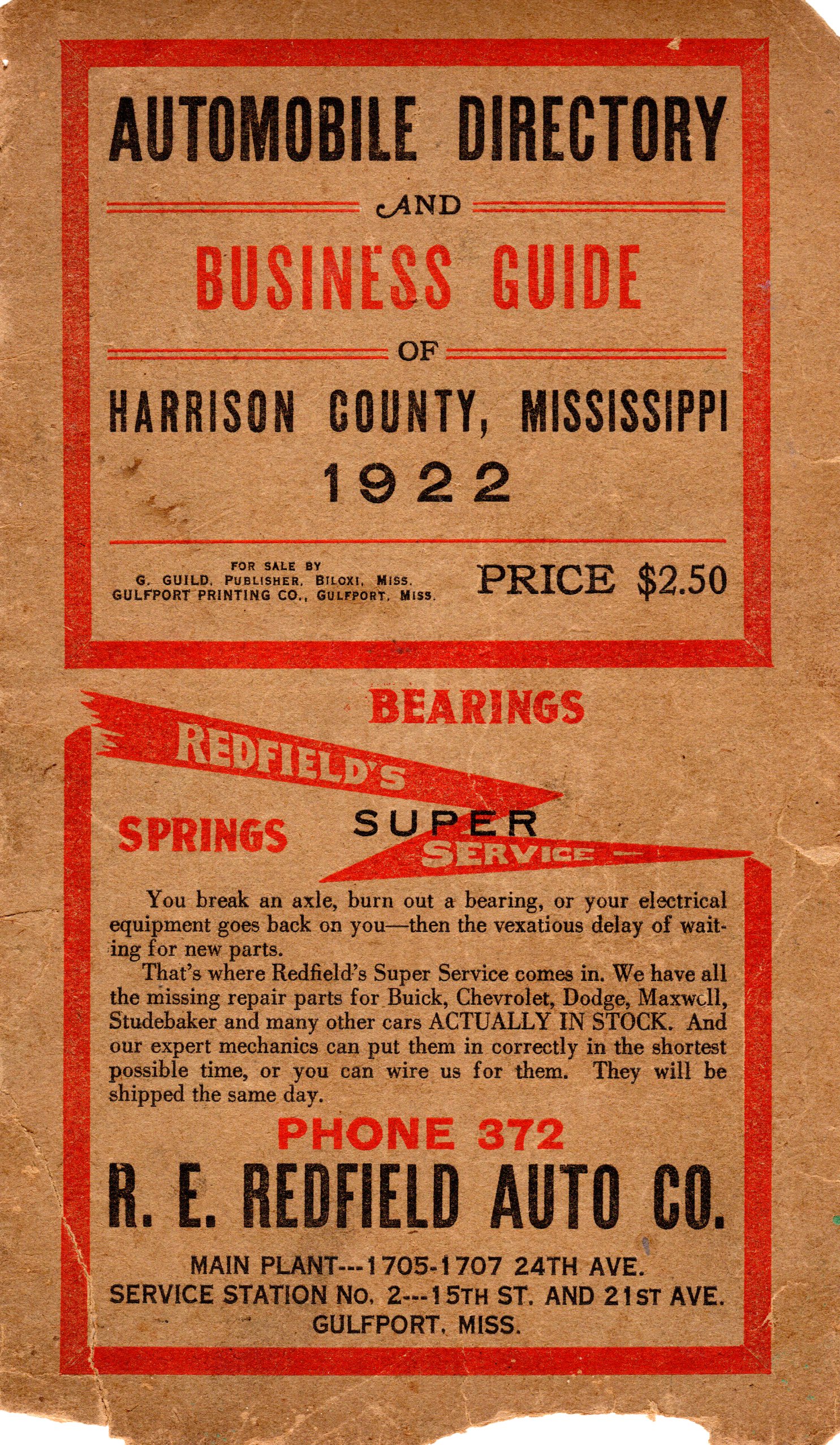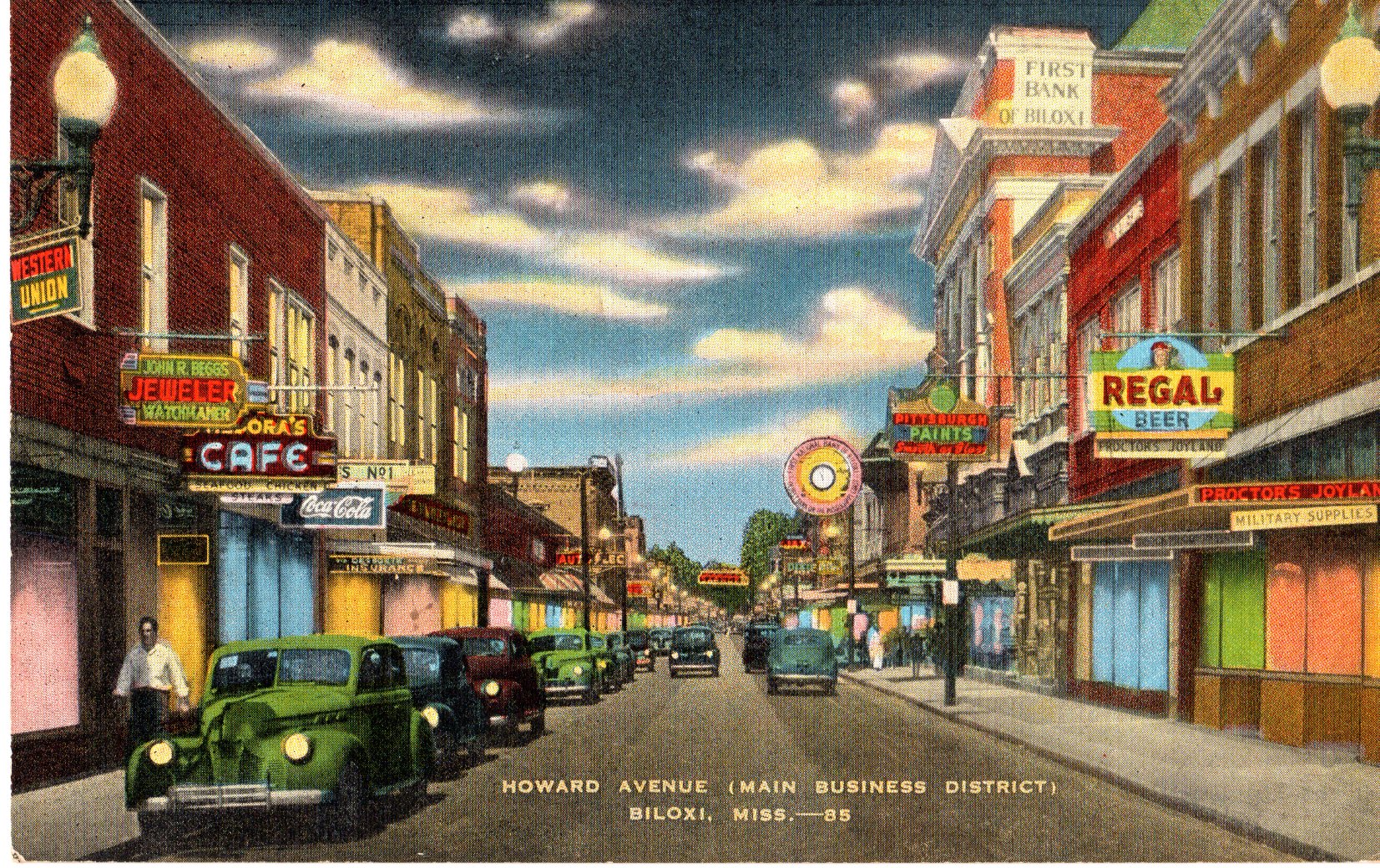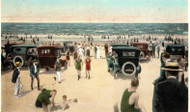Rolling Through Time
Posted by Jane Shambra on Oct 3rd 2024
Article originally written by Jane Shambra, a local Biloxi writer, for BNews Monthly, the monthly newsletter of the City of Biloxi. All images courtesy of the Local History and Genealogy Department / Biloxi Public Library / Harrison County Library System.
Back in the day, transportation along the Coast was limited to horse and buggy, boat, train, bicycle and walking. But in today’s modern world, cars have revolutionized how we get from one place to another. The four-wheeled vehicle has become a necessity, and roadways today are made to accommodate the fast pace of our population.

Biloxi's First Motorcar
Biloxi roadways were first traveled by car in July 1900 when Frank A. Schaeffer had an automobile delivered to Biloxi. He greeted his automobile on the waterfront when it arrived by schooner. Mr. Schaeffer, who was employed as a liveryman, offered rides in his new cruiser for 25 cents. In those days, Biloxi’s streets were paved with oyster shells, so a ride was quite a bit bumpy. One can only imagine that the wear and tear of automobile tires caused many repair jobs. It was reported that horses were not happy with the newly- introduced noise of the car’s engine and exhibited quite a stir. Folks were advised to “hold their horses” when his vehicle came along the roadway. The population during that time, by the way, was less than 6,000.
Mr. Schaeffer passed away suddenly in 1910 at the age of 45 and is buried in the Biloxi Cemetery.
A Treasure from the Past
Among the many old items found in the Local History and Genealogy Department is a little booklet titled “Automobile Directory and Business Guide of Harrison County, Mississippi 1922”. This nearly centuries old treasure has a listing of automobiles from 1922, each with the owner, license plate number, make and model number, and sometimes a manufacturer’s number. In those days, plate numbers were traditionally five digits long, with the first two digits reflective of the year it was first registered in this county. The booklet shows that the City of Biloxi only had one car, a 1919 Dodge with an assigned plate number 19881.
E. H. Howe of Biloxi registered a 1911 Ford Passenger car which was among the oldest cars listed. Mr. Howe and family operated the Seafoam Company of Biloxi, a business which manufactured condiments including peanut butter, French dressing, mayonnaise, and sweet relish. Later, the family was involved in the manufacturing of pralines and pecan taffy.
The driving regulations for the City of Biloxi are also included in this publication. In Biloxi’s business district, vehicles could only travel 10 miles per hour. Outside the district, a limit of 15 miles per hour was imposed. Parking on Howard Avenue and Reynoir Street was limited to 10 minutes on their bricked surfaces. License plates were to be posted on both the front and rear of the vehicle. And, right of way should always be granted to ambulances, U.S. mail wagons, and fire department vehicles.
The most prominent ad in the publication was a full-page spread for Leo Ohr’s gas engine repair shop at 411 Delauney St., which was close to the memorable 406 Lounge.

Filling Up the Tank
As cars emerged in Biloxi, so did places to gas up. In March 1919, Standard Oil and Gulf Refining Company sold gasoline for 25 cents per gallon and was located south of the railroad tracks at the end of Magnolia Street. As the need continued, service stations popped up. When someone would roll in to get fuel, they would get service. An attendee would pump gas, wash the windshields, check the tires for air, and open the hood to see if the car needed any additional oil.
Gas stations today offer a place to fuel up and are often accompanied by a convenience store providing a variety of snacks, beverages, and sometimes lottery tickets!
A special reminder of the good old days can be found today in downtown Biloxi at the corner of Howard Avenue and Main Street. The Ole Biloxi Fillin’ Station, a popular eatery that opened a few years after Hurricane Katrina, is housed in a 1930’s real service station. Today, there’s no gasoline sold. It’s just a repurposed and renovated icon offering great food and music.
A Famous Car Museum
Did you know that Biloxi had an official car museum? It did and it was on Bayview. In April 1998, the Imperial Palace Antique and Classic Auto Collection opened along with
a six-screen cinema inside the new Imperial Palace Casino. Ralph Engelstad owned the facility and the car museum which featured about 100 cars from his own collection.
The structure received significant damage during Hurricane Katrina in 2005. Throughout the aftermath, the structure housed recovery personnel and served as offices for FEMA as well as MEMA. It was the first casino to reopen in December 2005 after Katrina. The Imperial Palace Casino later changed its name to the IP Casino, the name we recognize today.
Cruisin' the Coast
Every year, during the first week of October, the Mississippi Gulf Coast celebrates Cruisin' the Coast. This much anticipated week-long event hails as “America’s Largest Block Party.” The celebration, featuring antique, classic, and specialty vehicles, began in 1996 and lasted only four days. Its official registration was merely 374 vehicles. Today, Cruisin’ the Coast includes thousands of registered cruisers that partake in block parties with nostalgic music, celebrities, great food, and car contests. Coastal cities take turns each day to feature their own special series of events. Biloxi’s Block Party takes place on Wednesday in the heart of downtown Biloxi.
Wheels of a Different Kind
Today, Biloxi cars take on a whole new set of characteristics. There are go-karts, golf carts and the electric vehicle.
For fun, the adventurous can compete on
an outdoor kart racing track at the Finishline Performance Karts located on Hwy. 90 just east of Veterans Avenue. Over to the west at the Big Play Entertainment Center, kids and adults can hop on a go-kart and cruise around the track.
For leisure, residents who own a golf cart can now tool around the city in specific areas where the speed limit is 25 mph or less. Owners have to meet certain requirements, register their vehicles, and display a decal provided by the Biloxi Police Department, all before rolling on the allowed roadways.
And for those who prefer electric cars, Biloxi has several locations for electric vehicle (EV) charging stations within its city limits to accommodate these modern needs. Locations are: Edgewater Mall, IP Casino Resort and Spa, Harrah’s Casino Hotel parking garage, Beau Rivage Casino and Resort, Doubletree Hotel, and the Greyhound and Coast Transit Depot in downtown Biloxi. More stations are likely to be installed, as the need arises.
October Spooks
The month of October cannot sneak by without a reminder of an unusual car ghost story. In 1983, the movie “Christine” was released. This 110-minute film was directed by John Carpenter and featured the scary tale of a 1958 Plymouth Fury, named Christine. It is cited as one of the scariest car movies ever made. “Christine” played in Biloxi in the early winter of 1984 at the Surfside 4 Cinemas located on West Beach Blvd.
The Segaloff Transportation System
Before Hurricane Katrina, the Biloxi Library received an amazing donation of all sorts of miniature transportation vehicles, including cars, trucks, busses, airplanes, and train engines. Through the generosity of Mr. David Segaloff, library visitors can imagine the past while viewing car displays featuring items from this collection.
Cars from this special collection will be featured throughout the month of October at the Biloxi Library.
Today, we cannot live without access to cars. Cars provide transportation for people and goods. They also connect people with friends and family in other places, and
are used to venture away from home, for shopping, vacations, and even Mardi Gras parades.
Cars are also important details when we look at pictures of the past. Identifying cars in an old photo can provide a clue as to when the picture was taken and serve as a window to the past.

###
Click here to order mouthwatering wild-caught shrimp straight from the warm waters of the Gulf of Mexico.

